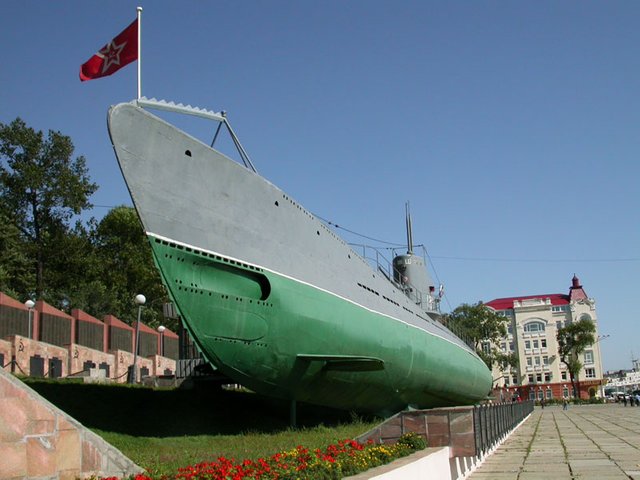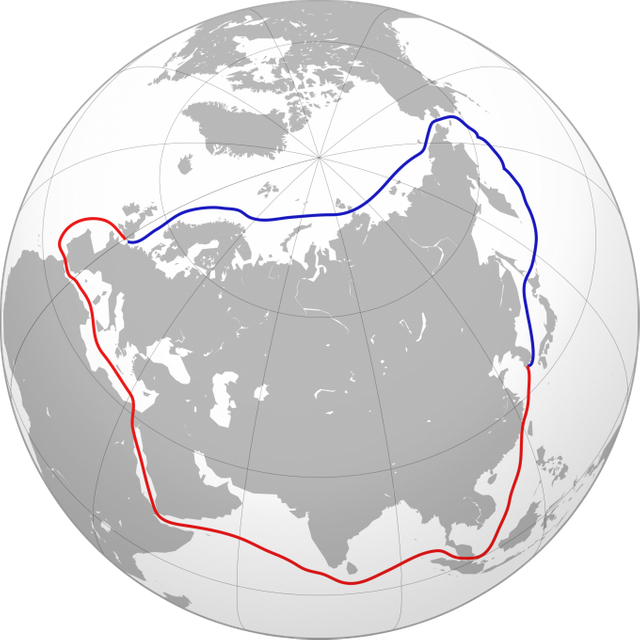C-56. Submarine-Memorial. Part 1 - History.
C-56 (C - "Medium") - Soviet diesel-electric torpedo submarine of the Second World War, the series IX-bis.

History of construction
Construction started on November 24, 1936 at the shipyard of the name Andre Marti (since March 30, 1992, the State Enterprise Admiralty Shipyards) in Leningrad. The sections were delivered by rail to the plant No. 202 "Dalzavod" in Vladivostok, where the final assembly was made. Launched on December 25, 1939, entered service on October 20, 1941.
The first commander of the submarine, GI Shchedrin, wrote in his book of memoirs "Onboard the S-56" about state hand-over tests:
...Members of the acceptance committee simultaneously start the stopwatches. My task - the control of the ship... We have to dive to the utmost depth. Everything goes as well as possible - the airtightness of the boat is complete. People behave perfectly. Most of them at such a depth for the first time, and yet on no one face I have seen traces of excitement - such is the power of confidence in Soviet technique. On the "ground" the submarine lay at a depth of five meters exceeding the official limit! A sturdy body, a shell - these steel muscles of the ship, as they are often called, did not utter a single "moan". Good steel welded by the workers! In the strength of the boat, I'm so sure that in a difficult moment, if you have to evade the enemy, without a moment's hesitation, I will dive to the depths much larger than the red line on indicates at the depth. What a satisfaction to trust those who build, and command such a wonderful ship!
October 30, 1941 assigned a tactical number and a submarine was become part of the Pacific Fleet.
October 31, 1941 on board was raised the flag of the Navy of the Soviet Union.
Shchedrin, Grigory Ivanovich
On October 6, 1942, C-56, under the command of Lieutenant-General Grigory Ivanovich Shchedrin, paired with the submarine S-51 under the command of Lieutenant-Commander Ivan Fomich Kucherenko, took the route Vladivostok-Petropavlovsk-Kamchatsky-Dutch Harbor (USA) -San- Francisco (USA) - Coco-Solo (USA) Panama Canal - Guantanamo (USA) - Halifax (Canada) - Rosait (Scotland) - Lerwick (Scotland) - Polar. The senior at the transition Hero of the Soviet Union captain 1st rank Alexander Tripolsky.
October 29, 1942 at the exit from the US Navy base - "Dutch Harbor" was attacked by an unidentified submarine. The torpedo passed under the bottom of C-56 and did not explode. When docking in the bottom of the submarine, the elements of the tail part of the torpedo are found.
November 7, 1942 near the coast of Southern California was attacked by unidentified submarine. Dodged at full speed. The torpedo was 50 meters behind the stern.
Participation in hostilities
During the war years, the C-56 made 8 military campaigns, made 13 attacks (30 torpedoes was launched). The submarine destroyed 4 ships (2 warships and 2 transports) and damaging one ship. At C-56 was dropped more than 3 thousand of depth bombs. During World War II C-56 19 times was declared destroyed...
Post-war
After the Second World War C-56 continued to serve in the Northern Fleet. In the period of July 10 - October 5, 1954 made transition in the above-water position along the Northern Sea Route from Ekaterininskoye harbor to Tarja Bay (Kamchatka), and then to Vladivostok, thereby becoming the first Soviet submarine which made the round-the-world transition.
The commander of the S-56 at the transition, Captain-Lieutenant Viktor Ivanovich Kharchenko (January 27, 1925 - October 1, 2012):
A furious wind is broking the ice fields. The ice floes piled on each other, forming large hummocks. The hull of the ship crimps by the ice... We use subversive cartridges. White fountains fly into the air. Compression weakens, But only for compress the hull of the boat again with his icy embraces. The stress reaches the highest limit. Two nights no one sleeps. No time to sleep...
Northern Sea Route

The subsequent fate
March 14, 1955, withdrawn from the fighting, disarmed.
April 20, 1964 is reformed into training submarine.
On May 9, 1975, on the day of the 30th anniversary of the Victory, was installed as Submarine-Memorial on the Korabelnaya Embankment, next to the Pacific Fleet headquarters in Vladivostok. C-56 is part of the memorial complex "Battle Glory of the Pacific Fleet." The internal premises are converted into a museum. In the aft part of the submarine, mechanisms dismantled, the exposition dedicated to the Pacific Fleet underwater forces is located. In the central and bow sections - the compartments are stored, on the shelves in the first compartment there is a torpedo ammunition. Working periscope. The C-56 daily takes place the ceremony of raising and lowering the Soviet Navy Flag. On the deck superstructure of the submarine there is a red star, Russian Federation symbols are missing.
In the next part - go on a tour inside the submarine!
Sincerely, Terry Craft.
Interesting post. I heard German submarines are the best. Is it true ?
The Germans were unsurpassed constructors in the Second World War in terms of introducing new technologies - it's a fact!
So much history! I love history and especially war history because it lead our world where it stands. Thanks for sharing!
I like to read war stories and other info. Nice article.
You're welcome
https://steemit.com/philosophy/@llange/is-the-dollar-vigilante-wrong-about-the-etymology-of-the-word-government
thank you @terrycraft good article
I think all sides in the war false reported sunk ships either intentionally or genuine mistake but declared sunk 19 times is crazy. I love playing WW2 war games if have enough spare time as they take hours. I know the Germans and Soviets were very friendly and had military cooperation prior to Barbarossa and im sure some technology was shared between the powers.
Interesting post.. And very informative
Woah, is it the one that stands as memorial in Vladivostok? I was inside of it, real fun, especially for the kids
Great blog! Check out my new post @the.dajboz follow me! :)
Thank you for sharing